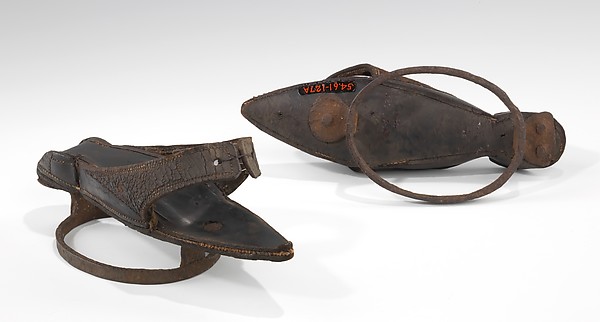
Everyone loves stylish shoes and needless to say those lovers of fashion, the Georgians, were no exception. As they are today, they were, as well as being obviously practical they were very much about making a statement despite being somewhat hidden below those wonderful long gowns.

The manufacture of shoes required great skill, no mass production existed in the Georgian Era, and each pair would have been crafted by hand. A shoemaker ‘if he be a good hand, sober and industrious will earn thirty shillings a week’ that equates to about £70 a week today.

For many shoemakers, it was a relatively solitary life, working in their own workshop, for others they would have a large shop in which to exhibit their work.

The work involved in making a pair of shoes required the shoemaker to cut out a leather upper to a pattern. A small weight would then be placed on the skin to keep it from slipping; a hammer was then used to beat down any rough parts which lay on the inside of the shoe. Then using a pair of pincers the leather was stretched. The upper was then joined to the sole of the shoe. The parts were then sewn together and waxed. He would then use an awl to make holes for laces to fit through if required. The best and strongest thread being that made from hemp.

Women were employed to bind shoes of all kinds and sew together those made of silk and satin. Women’s shoes were highly ornate often with curved heels and a strap to keep them in place. The streets, of course, weren’t clean and paved as they are today so it was common for women to wear a ‘clog’ or ‘patten’ over her shoes in order to keep them clean, quite a good idea, if somewhat uncomfortable to walk in!

By the advent of the Regency Era women’s shoes changed in style from heels to the equivalent of today’s ballet pumps, much lighter in substance and fastened with ribbons. These shoes were unusual in so much as they were straight and therefore there was no right or left shoe – would this have made them easier to wear?

With the advent of the Napoleonic Wars, huge quantities of boots and shoes were required and this saw the advent of methods of mass production. Handcrafted boots and shoes continued to be manufactured, but obviously, a premium price would have been paid for them, much as is the case today.

We couldn’t possibly write a blog about shoes and not include a pair worn by the doyenne of fashion, Marie Antoinette, which sold at auction in 2012 for 50,000 euros (£40,600; $65,600) on the anniversary of the French queen’s execution.
Our final offering is one of the usual caricatures courtesy of the Lewis Walpole Library, this young lady, however, appears to be showing off slightly more than just her new shoes!!
Sources:




Of course, I have such megalithic feet compared to women of that period; however, everything was made to order — so, no problems! The Regency slippers would have been very difficult for a woman with a high arch/in-step as the vamp just comes up too high on the foot (another of my issues). I like Grace’s shoes.
LikeLike
Grace’s shoes are stunning, but tiny, so not suitable for most of us today. Personally I would struggle to wear the Regency slippers – same problem as you – flats make my calves ache 😦
LikeLike
I had heard that the straight shoes were so that you could wear them on either foot and they would wear evenly. (I think I remember that fact from the back of an American Girl book.)
LikeLike
Shoes weren’t cheap and so it certainly was a way making them last longer. It was also the fashion during the Georgian Era to decorate shoes with buckles, but these were bought as an ‘add on’, so that they could be kept and reused on a new pair. They threw away far less than we do today and were great ones for repairing rather than replacing as well as making their own clothes and for many, also making their own shoes.
LikeLiked by 1 person
Pingback: History A'la Carte Date 4-21-16 - Random Bits of Fascination